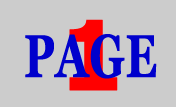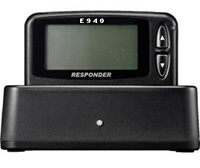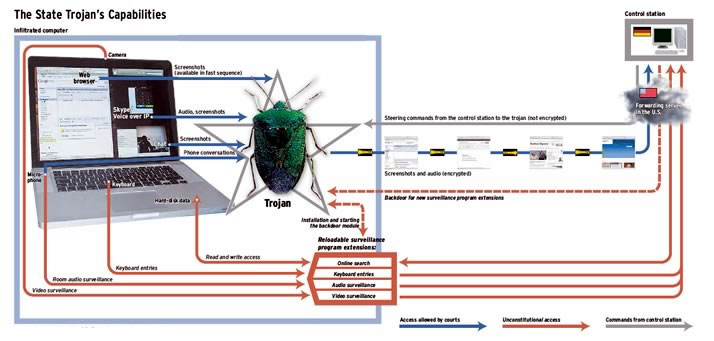 BloostonLaw Telecom Update Published by the Law Offices of Blooston, Mordkofsky, Dickens, Duffy & Prendergast, LLP [Reproduced here with the firm's permission.] www.bloostonlaw.com |
| Vol. 14, No. 44 | November 23, 2011 |
 NEWS AND VIEWS FCC Releases Order On Broadband/Intercarrier Compensation Reform (Last Friday, November 18, 2011, the FCC released its long awaited Report And Order And Further Notice Of Proposed Rulemaking (“Order” or “FNPRM” as appropriate) which runs to 489 pages of text, with almost 300 additional pages of appendices. We have previously written that the FCC’s actions constitute a watershed event for many of our rural ILEC clients and that some aspects of the FCC’s Order may be vulnerable to appellate review. Today, we feature a summary of the major changes to USF and intercarrier compensation (“ICC”) that will affect rate of return carriers almost immediately, in the new year. A further analysis of these changes and others will be provided in future issues of this newsletter, including an analysis of the FNPRM referred to earlier. Please note that this summary is provided at a high level. In the interest of time, there are reports and tariff filings, and specific financial calculations required, that are not detailed here. More focused analysis will follow on notable aspects of the Order, as mentioned, in addition to Calls For Action or other communications from our office, as indicated.) USF Reforms for Rate-of-Return Carriers: Under the order, rate of return carriers remain under the legacy universal service system, as modified, in the near-term. The FCC contends that based on 2010 support levels, nearly 9 out of 10 ROR carriers will see reductions in high cost universal service support of less than 20% annually, and 7 out of 10 will see reductions of less than 10% annually. The FCC states that almost 34% will see no reductions and more than 12% will see an increase in high cost support. The FCC intends to transition to more incentive-based regulation in the near future. |
 INSIDE THIS ISSUE - CAF/ICC Further Notice seeks ways to implement high-cost phase-out.
- Blooston Rural Carriers seek relief from outage reports.
- Gloomy prospects for AT&T/ST-Mobile merger.
- FCC continues EEO audits.
- FCC releases “Small Biz Cyber Planner.”
- House panel passes FCC process reform bills.
|
The modifications to universal service are as follows: - 1/1/12- the limit on COE is extended to ICLS.
- The COE formula applicable to HCLS is updated and also applied to ICLS.
- For study areas with 6,000 or fewer total working loops, the monthly amount per loop shall be $42.337 - (.00328 x number of total working loops) or $63,000/number of total working loops, whichever is greater.
- For study areas with more than 6,000 but fewer than 17, 887 total working loops, the monthly amount per loop shall be $3.007 +(117,990/number of total working loops).
- For study areas with 17,887 or more working loops, the monthly amount per loop shall be $9.56.
- Beginning 1/1/2013, the monthly per-loop limit shall be adjusted each year to reflect the annual percentage change in GDP-CPI.
- 2 1/1/12- The HCLS cap is reduced downward to reflect the fact that support for price-cap companies (including their ROR study areas) will be distributed through CAF.
- 1/1/2012- Parent trap rule, section 54.305, is revised. Any incumbent LEC subject to the provisions of section 54.305, that would otherwise receive no support or lesser support based on the actual costs of the study area, will receive the lesser of the support pursuant to section 54.305 or the support based on its own costs.
- 7/1/12- high-cost loop support will be reduced to the extent a carrier's local rates for voice services are below a specified urban local rate floor.
- This rule will be phased in, with full implementation in 2014.
- The rate floor is $10 for the period July 1, 2012 through June 30, 2013 and $14 for the period July 1, 2013 through June 30, 2014.
- Beginning July 1, 2014, the rate floor will be established after the Wireline Competition Bureau completes an annual survey of voice rates. The FCC anticipates that the rate floor for the third year will be close to the sum of $15.62 plus state regulated fees (state SLCs, state universal service fees and mandatory extended area service charges).
- HCLS and CAF Phase I support will be reduced dollar-for-dollar to the extent a carrier's local rates plus state regulated fees do not meet the urban rate floor.
- The calculation of the urban rate floor does not include federal SLCs.
- 7/1/12- local switching support will be eliminated as a separate support mechanism.
- Limited recovery of the costs covered by LSS will be available through the ICC recovery mechanism.
- To simplify the transition of LSS, beginning January 1, 2012 until June 30, 2012, LSS payments shall be frozen at 2011 support levels subject to true-up based on 2011 operating results.
- 7/1/12- adopt a rule that support in excess of $250 per line per month will no longer be provided.
- For carriers above the cap, support reductions will be phased in over three years beginning 7/1/12.
- From July 1, 2012 through June 30, 2013, carriers shall receive no more than $250 per-line monthly plus two-thirds of the difference between their uncapped per-line amount and $250.
- o From July 1, 2013 through June 30, 2014, carrier shall receive no more than
- $250 per line monthly plus one-third of the difference between their uncapped per-line amount and $250.
- July 1, 2014, carriers shall receive no more than $250 per line monthly. Affected carriers may file a petition for waiver or adjustment of the cap.
- 7/1/12- ROR carriers that continue to receive HCLS or ICLS or begin receiving new CAF funding in conjunction with ICC reform, must provide broadband service at speeds of at least 4 Mbps downstream and 1 Mbps upstream with latency suitable for real-time applications (like VoIP) and with usage capacity reasonably comparable to that available in residential terrestrial fixed broadband services in urban areas, upon reasonable request.
- Anticipated no later than 7/1/12, after FNPRM-limit reimbursable capital and operations expenses for purposes of determining HCLS support.
- FNPRM Appendix H sets forth a specific methodology for capping recovery for capital expenses and operating expenses using quantile regression techniques and publicly available cost, geographic and demographic data.
- The effect will be to limit high cost loop support amounts to reasonable amounts relative to other carriers with similar characteristics.
- 2012- Safety net additive support received for line loss will be phased out during 2012. No new carriers will receive safety net additive support.
- Carriers receiving safety net additive whose total TPIS increased by more than 14% over the prior year at the time of their initial qualification will continue to receive support for the remainder of their eligibility period.
- For the others, support will be reduced by 50% in 2012 and eliminated in 2013.
No new safety net support will be provided for costs incurred after 2009.
- Rule adopted to eliminate support for ROR companies in any study area that is completely overlapped by an unsubsidized competitor or a combination of unsubsidized competitors (defined as a facilities-based provider of residential terrestrial fixed voice and broadband service that meet CAF speed, capacity, and latency minimums).
- The FCC seeks comment on a process to reduce support where an unsubsidized competitor offers voice and broadband service to a substantial majority, but not 100% of the study area.
- All high-cost support will be phased out over 3 years in study areas where an unsubsidized competitor or combination of competitors offer voice and broadband service at speeds of at least 4 Mbps downstream and 1 Mbps upstream, and with latency and usage limits that meet the broadband performance requirements for 100% of the residential and business locations in the incumbent's study area.
- The FNPRM seeks comment on the methodology and data for determining overlap.
- The WCB will publish a finalized methodology for determining overlap and publish a list of companies for which there is a 100% overlap. In these areas, the incumbent's high cost support will be frozen at its total 2010 support or an amount equal to $3,000 times the number of reported lines as of year end 2010, whichever is lower and support will be reduced over three years (33% each year).
- The FNPRM also seeks comment on a process for determining support in study areas with less than 100% overlap.
- Waiver request possible if a company can demonstrate that it needs relief from reforms in order for its customers to continue receiving voice service in areas where there is no terrestrial alternative.
- Any company seeking additional funding will be subject to a total company earnings review.
General USF Reforms
The Commission continues to require all USF recipients to offer voice service. In addition, USF recipients must offer broadband service, as a condition of receiving support. - Supported services are defined as “voice telephony service”
- Section 54.101 is amended to specify that the functionalities of eligible voice telephony services include voice grade access to the public switched network or its functional equivalent; minutes of use for local service provided at no additional charge to end users; toll limitation to qualifying low-income consumers; and access to the emergency services 911 and enhanced 911 services
- ETCs must offer voice telephony as a standalone service throughout their designated service area at rates that are reasonably comparable to urban rates
- No preemption of state COLR obligations, at this time
- Rural rate for voice service will be considered reasonably comparable if it falls within two standard deviations above the national average. The WCB and WTB will conduct an annual survey of voice rates in order to compare urban and rural rates
- All ETCs must offer broadband services that meet basic performance requirements in their supported area as a condition of receiving federal high-cost support at rates that are reasonably comparable to those in urban areas.
- Broadband performance requirements are
- actual download speed of 4 Mbps and upload speed of 1 Mbps
- sufficiently low latency to enable use of real-time applications (latency of less than 100 milliseconds) and
- capacity reasonably comparable to urban offerings (the FCC states that a 250 GB monthly data limit would likely be adequate at this time)
- ETC can seek a waiver of the 1 Mbps upload speed if it can demonstrate that support is insufficient to enable 1 Mbps upstream for all locations
- Broadband performance requirements are relaxed for carriers providing fixed broadband that are compelled to use satellite backhaul facilities because there are no terrestrial backhaul facilities.
Intercarrier Compensation Reforms For Toll Carriers Including ROR Carriers - Bill and Keep “Default” Methodology (carriers may contract on particular terms) for terminating access and reciprocal compensation.
- 9 year transition for Rate of Return ILECs.
- 9 year transition for CLECs who are benchmarked to rural ILECs.
- 6 year transition for price cap LECs and other CLECs.
- 6 year transition for CMRS carriers with reciprocal compensation rates inconsistent with FCC’s Broadband Order.
- Interstate, intrastate access rates and reciprocal compensation rates to be reduced on prescribed glide path.
- FCC Notice of Proposed Further Rulemaking for Originating access, other access charge elements.
- Bill and Keep to Apply to ILEC-CMRS traffic as default to interconnection agreement (ICA).
- Phantom Traffic addressed by requiring call information, including from transit providers.
- VoIP–ILEC toll traffic subject to intercarrier compensation mechanism; traffic can be subject to tariffs; FCC prefers ICA arrangement.
- VoIP–ILEC non-toll traffic subject to applicable reciprocal compensation rate during transition.
- Intercarrier compensation for both toll and non-toll VOIP traffic transitions to Bill and Keep.
- Jurisdictional issues to be addressed by tariffs, similar to P.I.U. tariff provisions today.
- Clarification For Wireless Issues.
- FCC clarifies that wireless calls do not “originate” with CMRS carriers acting as transiting carriers to third parties, similar to issues in Halo Wireless proceedings.
- FCC clarifies that all CMRS-ILEC intra-MTA traffic subject to reciprocal compensation and to Bill and Keep, as default mechanism.
- FCC limits ILEC transport responsibility for CMRs-ILEC non-access traffic
- Revenue Recovery For LECs,.
- To replace some lost access revenues, the FCC has adopted an incentive regulation mechanism based upon 2011 RLEC revenue requirements and revenues. Essentially, each RLEC will receive from a new Connect America Fund mechanism:
- (1) an ADJUSTED ELIGIBLE RECOVERY AMOUNT consisting of:
- (a) its 2011 interstate switching access revenue requirement;
- (b) its 2011 intrastate switched access revenues; and
- (c) its 2011 net reciprocal compensation,
- (d) reduced by five percent each year ; from which will be SUBTRACTED:
- (2) the remaining intercarrier compensation revenues (intrastate access, interstate access and reciprocal compensation) collected by the RLEC; and
- (3) the Access Recovery Charges (ARCs)(for residential and single-line business customers: beginning at $0.50/line/month and increasing to $3.00/line/month over six years; for multi-line business customers: beginning at $1.00/line/month and increasing to $6.00/line/month over six years, but capped at $3.00/line/month if business already paying $9.20/line/month SLC). Any additional revenues generated by phantom traffic and VoIP revenue recovery will not increase the ADJUSTED ELIGIBLE RECOVERY AMOUNT that each RLEC will receive. Rather, the impact of any and all such increased intercarrier compensation revenues will be solely to reduce the amount of CAF support provided by the FCC to get the RLEC to its ADJUSTED ELIGIBLE RECOVERY AMOUNT.
- ROR carriers must deploy broadband “upon reasonable request” as conditions for receiving FCC replacement CAF.
- CLECs ineligible for CAF.
- All ILECs eligible for revenue mechanism; FCC declines “revenue neutral” approach.
- Safety Valve Opportunity allegedly available to show that recovery mechanism is “legally insufficient.” Heavy burden of proof imposed on ILECs.
BloostonLaw contacts: Ben Dickens, Gerry Duffy, and Mary Sisak. CAF/ICC Further Notice Seeks Ways to Implement High-Cost Phase-Out In its Further Notice of Proposed Rulemaking (FNPRM) accompanying its Connect America Fund (CAF)-Intercarrier Compensation (ICC) Report & Order, the FCC sought comment on issues related to its decision to phase out all high-cost support received by incumbent rate-of-return (RoR) carriers over three years in study areas where an unsubsidized competitor, or combination of unsubsidized competitors, offering voice and broadband service that meets its performance obligations serves 100 percent of the residential and business locations in the incumbent’s study area. The FCC seeks comment on a proposed methodology for determining the extent of overlap, a process for preliminary determinations of such overlap, a process for the affected eligible telecommunications carrier (ETC) to challenge the accuracy of the purported overlap, with input from the relevant state commission and the public, and how to adjust support levels in situations with less than 100 percent overlap. The FCC intends to publish a final methodology on these issues in the future. Some of the highlights of Sections A-K of the FNPRM include: - In its Order, the FCC adopted a rule to use benchmarks for reasonable costs to impose limits on reimbursable capital and operating costs for high-cost loop support received by RoR companies. The FCC included a specific methodology for calculating individual company caps for HCLS in Appendix H of its document. It seeks comment on using this methodology to impose limits on reimbursement from HCLS and proposes to implement this methodology for support calculations beginning July 1, 2012.
- In the Order, the FCC concluded that it should also limit recovery of excessive capital and operating costs through the interstate common line support mechanism. It seeks comment on how specifically to implement such a limit for interstate common line support (ICLS).
- Under the new funding mechanisms established in the Order and proposed in the FNPRM, ETCs may receive reduced support in their existing service areas, and ultimately may no longer receive any federal high-cost support. The FCC seeks comment on whether such reductions should be accompanied by relaxation of those carriers’ section 214(e)(1) voice service obligations in some cases.
- The FCC seeks comment on several measures—in addition to requiring USF/Mobility Fund recipients to meet public interest obligations or provide broadband at reasonable rates—to impose greater accountability on recipients of funding.
- The first alternative remedy the FCC proposes for non-compliance with its rules is a financial guarantee. The FCC proposes that a recipient of high-cost and CAF support should be required to post financial security as a condition to receiving that support to ensure that it has committed sufficient financial resources to complying with the public interest obligations required under the Commission’s rules and that it does in fact comply with the public interest obligations set forth in Section VI of the Order. In particular, the FCC seeks comment on whether all ETCs should be required to obtain an irrevocable standby letter of credit (LOC) no later than January 1, 2013.
- In other sections of the FNPRM, the FCC seeks comment on applying post-auction procedures, including performance guarantees, to ETCs that apply for funding after a competitive bidding process. In this section, the FCC seeks comment on adopting financial performance guarantee requirements for ETCs that receive funding through processes other than competitive bidding.
- The FCC seeks comment on whether revocation of ETC designation, denial of certification resulting in prospective loss of support, or recovery of past support amounts is an appropriate remedy for failure to meet the public interest obligations adopted in the Order.
- The FCC also seeks comment on what specific triggers might lead to support reductions, how much support should be reduced, how best to implement support reductions, and how the review and appeal process should be revised.
- The FCC seeks comment on whether there are certain requirements in its new annual reporting rule for ETCs, new section 54.313, that do not reflect basic differences in the nature and purpose of the support provided for mobile services. Specifically, the FCC seeks comment on whether it should revise the section 54.313 reporting requirements or adopt new reporting requirements that would apply to support an ETC receives to provide mobile services. For example, new section 54.313 requires ETCs to include in their annual reports, beginning with their April 1, 2014 report, information regarding their progress on their five-year broadband buildout plan.
- The Order establishes the Mobility Fund, which is to help ensure the availability of mobile broadband services across America. This addresses specifically the second phase of the Mobility Fund, which provides ongoing support for mobile broadband and high quality voice services. The FCC said it anticipates disbursements from the second phase of the Mobility Fund to occur as early as the third quarter of 2013. The Order establishes an annual budget of $500 million, up to $100 million of which will be reserved to support Tribal lands, including Alaska. The FCC proposes rules to use the Mobility Fund Phase II to ensure 4G mobile wireless services in areas where such service would not otherwise be available, and seeks comment on certain alternative approaches.
- The FCC proposes to use a reverse auction mechanism to distribute support to providers of mobile broadband services in areas where such services cannot be sustained or extended without ongoing support. The FCC proposes that the reverse auction be designed to support the greatest number of unserved road miles (or other units) within the overall Mobility Fund budget. The FCC seeks comment on alternatives, including the use of a model to determine both the areas that would receive support and the level of support. There are a variety of other issues, including process and procedure, related to the reverse auction proposal.
Sections L-R of the FNPRM deal with intercarrier compensation, and the FCC’s proposal to transition to “bill and keep.” Comments in this WC Docket No. 10-90, et al. proceeding are broken down as follows: Comments are due January 18, and replies are due February 17, on Section XVII, Parts A-K (Broadband public interest obligations; CAF for RoR carriers; Interstate RoR prescription; Eliminating support for areas with an unsubsidized competitor; Limiting reimbursable capital and operating costs for RoR carriers; ETC service obligations; accountability; Annual reporting requirements for mobile service providers; Mobility Fund (Phase II); Reverse auctions; and Remote Areas Fund). Comments are due February 24, and replies are due March 30, on Section XVII, Parts L-R (ICC—transitioning to Bill & Keep; Implementation of Bill & Keep; Reform of end user charges and CAF ICC support; IP-to-IP interconnection; Further call signaling rules for VoIP; New ICC rules). BloostonLaw contacts: Ben Dickens, Gerry Duffy, and Mary Sisak. Blooston Rural Carriers Seek Relief From Broadband Outage Reports BloostonLaw, on behalf of the Blooston Rural Carriers, has filed an Ex Parte letter to the FCC, expressing concern about the Commission’s proposed rules regarding outage reporting requirements in PS Docket No. 11-82. Specifically, the Blooston Rural Carriers said that the FCC’s proposed rule Section 4.9(h)(2)(ii)-(iv), concerning outage reporting requirements for broadband Internet access service providers, should not be applied at this time to small rural carriers. Most smaller carriers currently are unable to meet this requirement, and the requirement is not tailored to meet the FCC’s objective in a cost-effective way. According to the Blooston Rural Carriers, the proposed rule would require the submission of a notification to the Commission within 120 minutes of the discovery that an outage of at least 30 minutes duration has occurred which potentially affects at least 900,000 user minutes and results in (i) complete loss of service;
(ii) an average packet loss of 1 percent or more;
(iii) an average round-trip latency of 100ms or more;
(iv) or average jitter of 4 ms or more, with all measurements taken in each of at least 6 consecutive 5-minute intervals.
While the language in Section 4.9(h)(2) regarding “potentially affected minutes” closely tracks the language of the requirements already in place for rural wireline carriers, Subsections 4.9(h)(2)(ii), (iii), and (iv), regarding packet loss, latency, and jitter, are entirely new. Currently, many carriers have no procedures in place to track these metrics and, in some cases, no technological capability to track them. As the record reflects, the Blooston Rural Carriers said, compliance with the Commission’s proposed rules will likely result in substantial additional costs for most carriers. Thus, the Blooston Rural Carriers urged the FCC not to require additional outage reporting from small, rural carriers at this time. In the alternative, they said, small carriers should have a longer period to comply with any rules the FCC eventually adopts, similar to the extended period granted to small providers for the implementation of the Commission’s Local Number Portability (LNP) “one-day reporting requirement.” BloostonLaw contacts: Ben Dickens, Gerry Duffy, and Mary Sisak. Some
Now Have Gloomy Prospects For Proposed AT&T/T-Mobile
Deal
The Financial Times reports gloomy prospects for AT&T winning approval for its proposed $39 billion acquisition of T-Mobile USA. The Times says that AT&T will have to make significant concessions before the February trial, in which the Department of Justice (DoJ) will present its case for blocking the proposed merger on antirust grounds. Meanwhile. FCC Chairman Julius Genachowski has asked that an Administrative Law Judge review the deal, following a staff determination that the merger would not be in the public interest. According to the Financial Times, most analysts now rate the deal's chances as less than 50/50, with some even giving it only a 20 percent chance of approval. Bankers note that for the deal to win approval, AT&T might have to sell significant spectrum—possibly advanced wireless service (AWS) spectrum—to smaller companies like MetroPCS. AT&T and T-Mobile, however, continue to insist that the merger will win approval. And as the Wall Street Journal reports, Verizon recently broke its silence and said it sees “no problem” with the proposed merger, as long as it doesn't come with additional FCC regulation.” Earlier this month, AT&T pushed back the closing date for the merger until the first quarter of next year, rather than at the end of this year (BloostonLaw Telecom Update, November 9). Further, the U.S. District Court for the District of Columbia ruled that Sprint Nextel and C Spire (formerly Cellular South) could pursue their lawsuits regarding antitrust implications for the mobile services device market (BloostonLaw Telecom Update, November 9). BloostonLaw contacts: Hal Mordkofsky, Ben Dickens, Gerry Duffy, and John Prendergast. FCC CONTINUES EEO AUDITS: The FCC has mailed the third set of its Equal Employment Opportunity (EEO) audit letters for 2011. This mailing was sent to randomly selected multichannel video programming distributors (MVPDs). The FCC annually audits the EEO programs of randomly selected broadcast licensees and MVPDs. Each year, approximately 5% of all broadcast stations and MVPDs are selected for these random EEO audits. By Public Notice DA 11-571, released March 31, 2011, and Public Notice DA 11-1330, released August 2, 2011, the Media Bureau announced its mailing of similar audit letters to selected broadcast stations. BloostonLaw contact: Gerry Duffy. FCC RELEASES “SMALL BIZ CYBER PLANNER”: The FCC has released the Small Biz Cyber Planner, a new online tool to help small businesses customize their own cybersecurity plans. The online tool is available at www.fcc.gov/cyberplanner . The Small Biz Cyber Planner online resource will enable any small business to create a customized guide tailored to its cybersecurity needs by answering a few basic questions. According to the FCC, by using this tool and implementing the planning guide, businesses can protect themselves, their information, and their customers from cyber threats. The new online tool was developed as part of a collaboration with government experts and private IT and security companies, including Department of Homeland Security (DHS), National Cyber Security Alliance (NCSA), The U.S. Chamber of Commerce, The Chertoff Group, Symantec, Sophos, Visa, Microsoft, Hewlett Packard (HP), McAfee, The Identity Theft Council, ADP and others. BloostonLaw contacts: Hal Mordkofsky, Ben Dickens, Gerry Duffy, and John Prendergast. HOUSE PANEL PASSES FCC PROCESS REFORM BILLS: The House Energy and Commerce Communications and Technology Subcommittee, chaired by Rep. Greg Walden (R-OR), today approved the Federal Communications Commission Process Reform Act of 2011 (H.R. 3309) by a vote of 14 to 9, and the Federal Communications Commission Consolidated Reporting Act of 2011 (H.R. 3310) by voice vote. These bills aim to improve the way the FCC operates by increasing transparency, predictability, and consistency as part of ongoing efforts to ensure that the Commission’s work encourages job creation, investment, and innovation (BloostonLaw Telecom Update, November 9). BloostonLaw contacts: Hal Mordkofsky, Ben Dickens, Gerry Duffy, and John Prendergast. OPEN RANGE TO LIQUIDATE ASSETS AFTER SOLE BIDDER BACKS OUT: Open Range Communications' assets will be liquidated by the end of the year, and its wireless-broadband service in 12 states will be discontinued after the sole bankruptcy bidder backed out last week, according to the Denver Post. It said that Colorado-based Open Range had chosen Minnesota-based TotheHome.com as its "stalking horse" bidder in last week's auction of its assets. TotheHome.com had offered $2 million. But it notified Open Range that it would not be buying the assets as specified in a November 2 asset-purchase agreement, according to the Post. In court filings, Open Range blamed the bankruptcy on the inability to get the broadcast spectrum it needed, problems with network quality and vendors, and the "sporadic" flow of money from a $267 million Rural Utilities Service (RUS) loan. Open Range owes a balance of $73.5 million. The House Energy and Commerce Committee recently launched an investigation into the loan (BloostonLaw Telecom Update, November 16). BloostonLaw contacts: Ben Dickens, Gerry Duffy, and Mary Sisak. COMMERCIAL MOBILE SERVICE PROVIDERS MUST HAVE CMAS ELECTION NOTIFICATIONS ON FILE WITH FCC; PARTICIPANTS SHOULD BEGIN READINESS PREPARATIONS: In the wake of hurricane Irene and serious regional flooding, BloostonLaw wishes to once again remind our firm’s commercial mobile wireless clients of the possible need, if they have not done so already, to advise the FCC whether their company intends to participate in the Commercial Mobile Alert System (CMAS). While participation in the CMAS is voluntary, the filing of an election report is not. All Commercial Mobile Service (CMS) providers must file regardless of whether they intend to participate or not to participate. The notification must be filed electronically in the Commission’s Electronic Comment Filing System (ECFS). The filing requirement applies to all providers of commercial mobile service, including licensees in the following services: Cellular, Broadband PCS, Narrowband PCS, WCS, 700 MHz Guard Band and 700 MHz Commercial, AWS and Common Carrier Paging. If you have already made the initial filing (and most of our clients have done so), there is no need to make a further filing unless you elected to opt out in the initial filing (as most of our clients did) and now wish to change that election. Hardware Requirement: Wireless carriers that have elected to participate in CMAS must have necessary network hardware and software installed and ready for operation by April 7, 2012, which is now only four months away. BloostonLaw contacts: Hal Mordkofsky, John Prendergast, Cary Mitchell, Richard Rubino. CONFIRMATION HEARING FOR NEW FCC COMMISSIONERS SET FOR NOVEMBER 30: The U.S. Senate Committee on Commerce, Science, and Transportation has scheduled a November 30 hearing to consider the nominations of Ms. Jessica Rosenworcel and Mr. Ajit Varadaraj Pai, to be FCC Commissioners. BloostonLaw contacts: Hal Mordkofsky, Ben Dickens, Gerry Duffy, and John Prendergast. OBAMA SIGNS BILL PROVIDING FUNDING FOR RURAL ELECTRIC, TELECOM, AND BROADBAND PROGRAMS: President Obama has signed HR 2112, the Consolidated and Further Continuing Appropriations Act of 2012, which provides appropriations through September 30, 2912. The bill is based on a House Conference Report on the Fiscal Year 2012 Agriculture, Commerce/Justice/Science, and Transportation/Housing appropriations. The conference agreement provides $2.25 billion for rural development programs – $180 million below the fiscal year 2011 level. This funding includes $7.7 billion in loans for the rural electric and telecommunications program, and $212 million in loans for broadband deployment in rural areas. BloostonLaw contacts: Hal Mordkofsky, Ben Dickens, Gerry Duffy, and John Prendergast. D.C. CIRCUIT UPHOLDS FCC’s DEFINITION OF “REASONABLY COMPARABLE” SERVICE: In Vermont Public Service Board v. FCC, both Vermont and Maine regulators challenged the FCC’s definition of “reasonably comparable” rates for telecommunications service between rural and urban areas, which the Commission must ensure under the Communications Act. However, the U.S. Court of Appeals for the District of Columbia Circuit ruled in favor of the FCC. The Court said that the Commission has explained that “reasonable comparability” between rural and urban areas has been largely accomplished and that expansion of the universal service high-cost support fund will “jeopardize other statutory mandates,” such as extending services to schools, hospitals, and libraries, and “ensuring affordable rates in all parts of the country.” Because of this, the Court said, and because the Commission has promised to address state-specific issues, like those presented by Vermont and Maine, through the waiver process, its decision to leave the high-cost support mechanism unchanged is neither arbitrary nor capricious. The D.C. Circuit thus denied the Vermont and Maine petition for review. BloostonLaw contacts: Ben Dickens, Gerry Duffy, and Mary Sisak. FAILURE OF SUPER COMMITTEE UPs ANTE ON SPECTRUM LEGISLATION: As predicted by most analysts, the Joint Select Committee on Deficit Reduction (also known as the “Super Committee”) failed to reach a bipartisan agreement before its Thanksgiving deadline, primarily because of the wide gap between Democrats and Republicans on entitlements and spending cuts. Senate Commerce Committee Chairman Jay Rockefeller (D-W.Va.) was particularly disappointed because there was a failure to agree on spectrum legislation. Rockefeller said: “I am troubled by the Super Committee’s failure to make good on their promise to deliver a deficit-reduction plan for America. Ranking Member Kay Bailey Hutchison and I recommended that the super committee include S.911, the Public Safety Spectrum and Wireless Innovation Act in their proposal. This bill would not only reduce the federal deficit by at least $6.5 billion but also provide first responders with a life-saving communications network and spur billions of dollars in economic investment. Winning ideas like S.911 cannot keep falling victim to this partisan stubbornness. I will continue to pursue all avenues to get S.911 enacted this year.” S.911 would allocate the 10 MHz “D-block” to a nationwide public safety network, authorize “incentive auctions” for TV broadcasters to voluntarily relinquish their spectrum, and direct surplus auction revenue to reduce the deficit (BloostonLaw Telecom Update, June 15). The House, however, subsequently released a pair of competing discussion drafts. The GOP proposal would auction the D-block and the voluntarily relinquished TV broadcast spectrum to commercial bidders, while the Democratic version would allocate the D-block to public safety (BloostonLaw Telecom Update, July 27). These differences must be worked out before there is a legislative solution. Now with the failure of the Super Committee to act, as BNA reports, many believe there will be more pressure on Congress to pass spectrum legislation this year or early next year. BloostonLaw contacts: Hal Mordkofsky, John Prendergast, and Cary Mitchell.  This newsletter is not intended to provide legal advice. Those interested in more information should contact the firm. |





















 Android malware has jumped 37 percent in the third quarter of 2011, according to a new quarterly report released by security provider McAfee. Where our phones go, so too go viruses, especially on the Android platform.
Android malware has jumped 37 percent in the third quarter of 2011, according to a new quarterly report released by security provider McAfee. Where our phones go, so too go viruses, especially on the Android platform. 

































